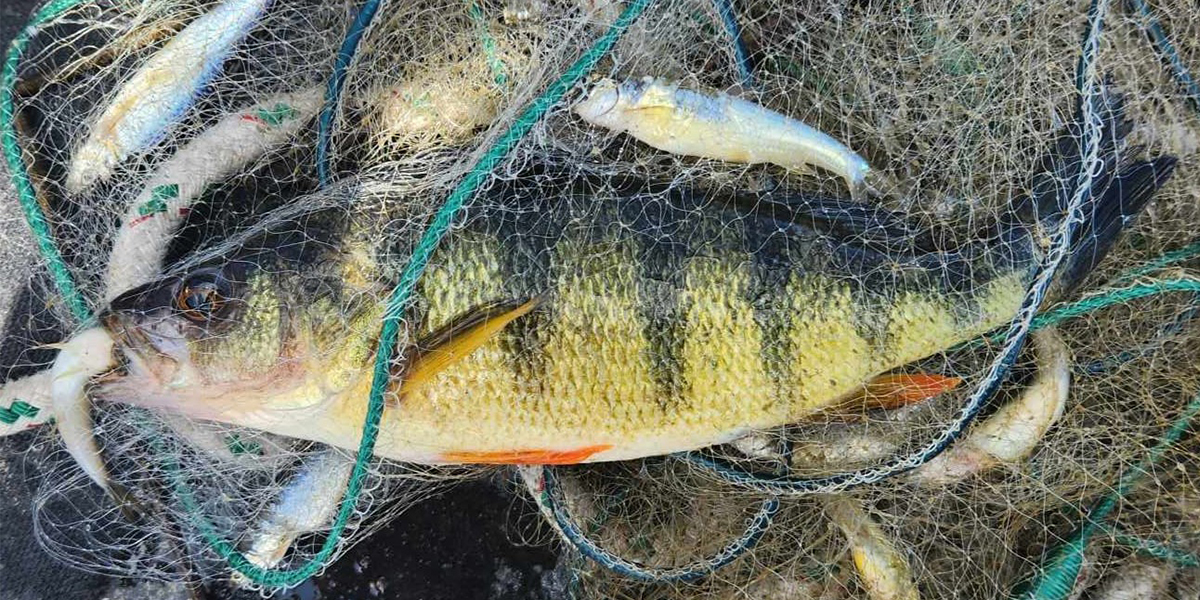Alewife Invasion Alters Lake Champlain Food Web, But Not How We Expected
Feb. 8th 2024In the first decade of our lives, we are taught about the food chain in science class. A plant photosynthesizes and is eaten by an herbivore, which is then eaten by a predator, and so on. However, a more accurate way to visualize these energy pathways is through a food web with various interacting elements that work together to create the conditions we see in an ecosystem. Food web dynamics are complex and finicky. The introduction of a new species can drastically alter the interactions in an ecosystem, or they can have negligible impacts.
Lake Champlain is home to 52 aquatic invasive species, including fishes, plants, and other organisms. Each one of these species impacts the energy flow and food web dynamics of their environment. Scientists can look at the Great Lakes to predict how the introduction of new species into Lake Champlain could alter the food web. This comparative method helped scientists understand the zebra mussel invasion and is being used to proactively manage the incoming threats of quagga mussels and round goby. However, these predictions are not always accurate because the impacts of invasives are so dynamic and variable.
Justin Lesser, a post-doctoral researcher at the University of Vermont Rubenstein Ecosystem Science Laboratory, and his team have been studying the role invasive alewives have played in altering the Lake Champlain food web. Alewives are small fish native to the Atlantic Ocean that made their way into the Great Lakes in the nineteenth century. The alewife invasion had negative impacts on native lake trout populations and varying impacts on other native fish populations. With a hatchery-supported population of lake trout in Lake Champlain with no signs of successful natural reproduction, researchers predicted similar impacts on native fish communities. Invasive alewives entered Lake Champlain in 2003. Over a decade later, scientists have not observed the negative impacts on lake trout restoration that they expected.
“Our model results highlight how ecological context can influence the trajectory of an invasion and therefore the challenges of predicting the impact of an invasive in a new location based on previous invasions,” explained Lesser.
Lesser and his team modeled the coldwater food web in Lake Champlain’s Main Lake to compare the biomass of various fish species before, during, and after the invasion of alewives. The team used a modeling approach based on current trophic relationships (after alewives were added to the system) to simulate these complex relationships as alewife entered and proliferated. They found that rainbow smelt, troutperch, and slimy sculpin biomass remained constant during the expansion of alewife populations while lake trout and other native predators increased in biomass after the invasion. In fact, the first wild lake trout since stocking began in 1972 were observed after alewife invaded the lake.
Why did Lake Champlain experience seemingly opposite outcomes to the Great Lakes? Alewives are hypothesized to interfere with native lake trout restoration in the Great Lakes by preying on lake trout embryos and impacting the health of lake trout eggs. However, alewife populations in Lake Champlain do not seem to overlap with lake trout embryos to the same degree as they do in the Great Lakes, making them less of a threat. Based on this study and past surveys, the introduction of alewives in Lake Champlain may have played a role in the revitalization of lake trout in Lake Champlain.
“Alewives have become an important part of lake trout diets and are more energy-dense than rainbow smelt, which are another important food source in their diet,” said Lesser. “Alewives tend to consume more zooplankton and fewer Mysis than rainbow smelt, making a more direct energy transfer from producers to lake trout.”
Because the introduction of alewives had varying positive effects on Lake Champlain fishes and no species has experienced a significant decrease in biomass, Lesser and his team think alewives may have found an underutilized niche in the lake food web or outsourced their energy needs to other parts of the lake.
“The results of our food web model raise interesting questions about energy flow in the current Lake Champlain food web relative to pre-invasion conditions,” said Lesser. “The establishment and proliferation of alewives in Lake Champlain, apparently without a corresponding decrease in biomass of other food web components in the Main Lake, leads to the question: where did the extra production required to maintain alewife populations come from?”
These findings paint a different picture of what an alewife invasion can look like in a lake, and highlight the value of studying the specific energy pathways involved. The model can be used for future food web research related to management actions, such as examining the relationship between stocked lake trout and recovering wild lake trout populations or incoming invasive species like the round goby.
 ecoNEWS VT
ecoNEWS VT